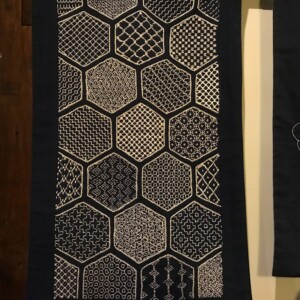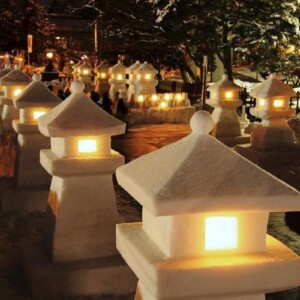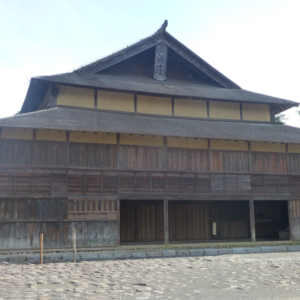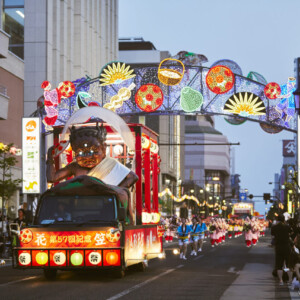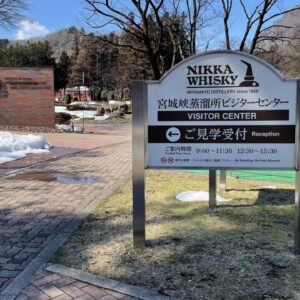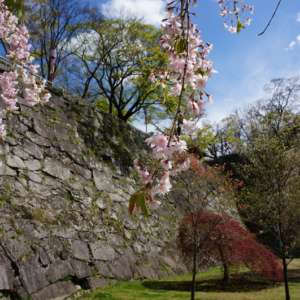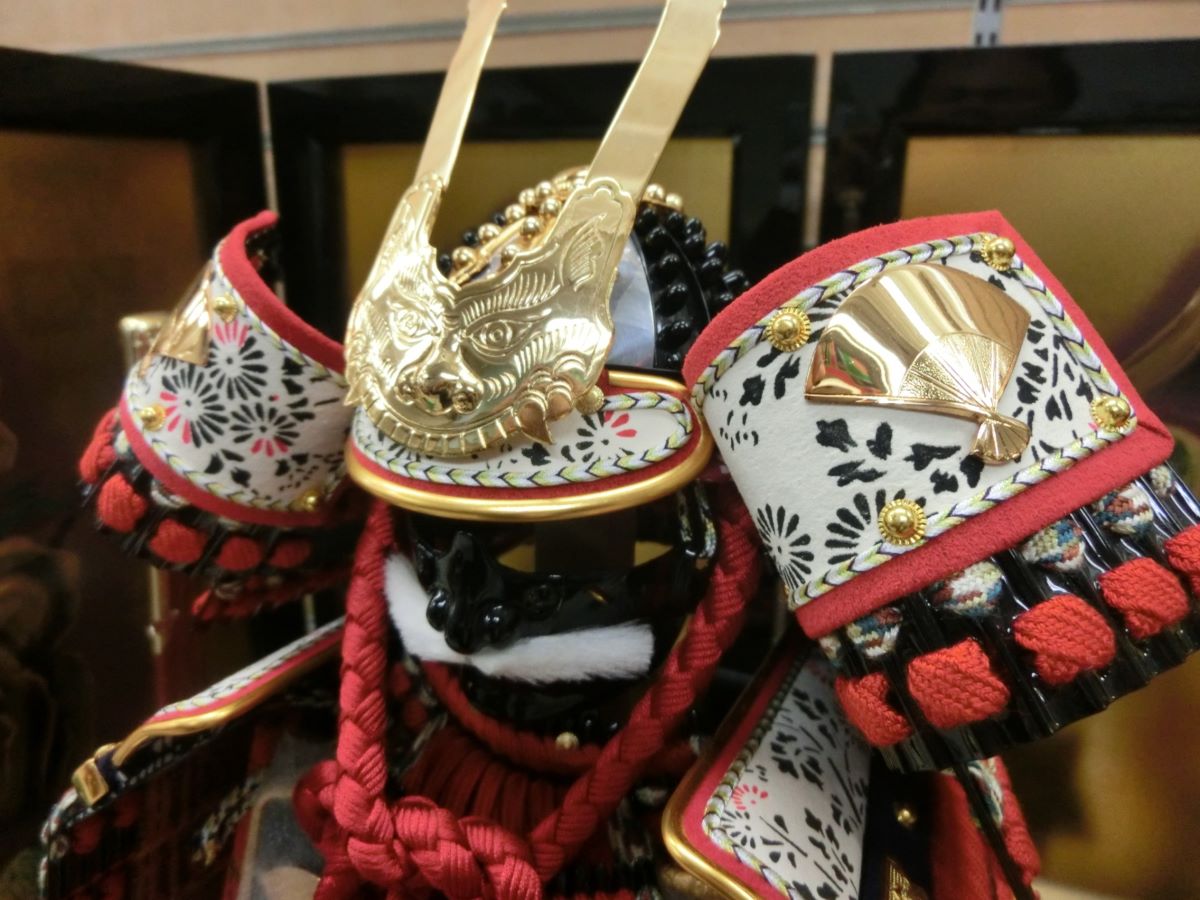
[Series ④: The role of the previous nine years and the role of the second three years] Mr. Kiyohara's participation in the war completely changed the flow of the role of the previous nine years
table of contents
- 1 What are the roles of the previous nine years and the latter three years (Zenkunen no Eki and Gosannen no Eki)?
- 2 10,000 Kiyohara troops join forces with the Kokufu army led by Yoriyoshi!
- 3 Allied forces invading the Okurokugun
- 4 The Battle of Kuriyagawa and the fall of the Abe clan
- 5 summary
- 6 Serialization: The role of the first nine years, the role of the second three years
After being defeated by Abe no Sadato in the Battle of the Yellow Sea, Minamoto no Yoriyoshi and his son Yoshiie are said to have worked tirelessly to regain their fighting strength
However, after two major defeats following the Onikiribe defeat, they were unable to gather as many soldiers as they had hoped, and had to recruit soldiers from the Kanto and Tokai regions as well
Meanwhile, the Abe clan expanded beyond their base in Okurokugun (Iwate Prefecture) into the sphere of influence of the provincial government, demonstrating their power to the point of collecting taxes and conscripting troops
Yoriyoshi believed that if things continued as they were, the Abe clan would grow stronger, and far from being defeated, the prestige of the Minamoto clan that had been built up in the eastern provinces would be greatly shaken, so he tried to win over the Kiyohara clan, whose power was expanding in Dewa (Akita Prefecture), to his side
What are the roles of the previous nine years and the latter three years (Zenkunen no Eki and Gosannen no Eki)?
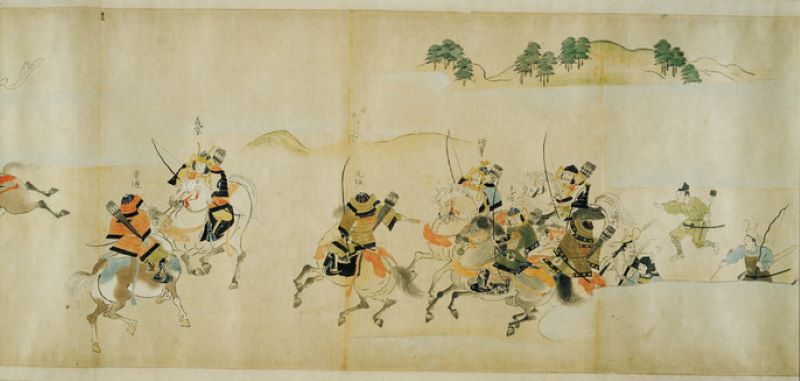
It was fought in Tohoku (Iwate Prefecture and Akita Prefecture) from 1051 (Eisho 6) to 1062 (Kohei 5) and from 1083 (Eiho 3) to 1087 (Kanji 1) at the end of the Heian period. There are two campaigns.
The War of the Nine Years was a campaign in which the Minamoto clan, dispatched by the imperial court, quelled the rebellion of the Abe clan, which was growing in power in Mutsu (Iwate Prefecture), with the help of the Kiyohara clan.
After that, an internal conflict arose in the Kiyohara clan, which had strengthened its control from Mutsu to Dewa (Akita prefecture), and the dispute over the family headship developed into a battle during the War of the Third Year, and the Minamoto clan was also here. is deeply involved.
These two campaigns led to the establishment of the Oshu Fujiwara clan in Hiraizumi, Iwate Prefecture, and the bond between the Minamoto clan and the samurai of eastern Japan deepened, leading to the establishment of the Kamakura shogunate under Minamoto no Yoritomo.
10,000 Kiyohara troops join forces with the Kokufu army led by Yoriyoshi!
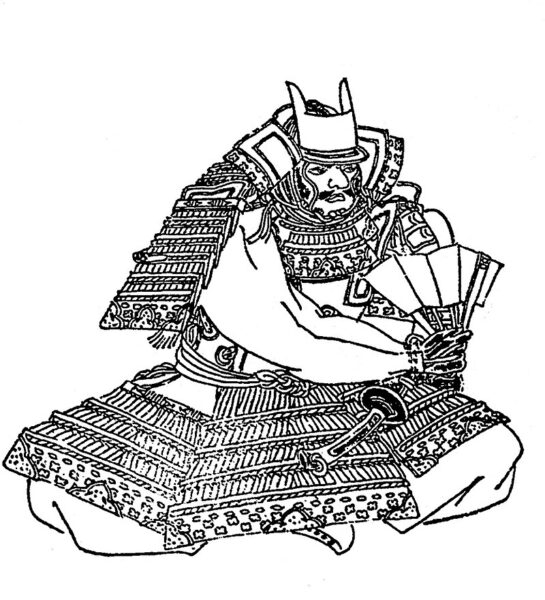
The Kiyohara clan, who expanded their influence in Senboku, Dewa (around Senboku City, Daisen City, and Yokote City in Akita Prefecture), were Emishi (emishi) who obeyed the Imperial Court and were called "Fushu," but they maintained a neutral stance in the battle between the Kokufu army and the Abe army
Yoriyoshi tries to persuade Kiyohara Mitsuyori to join the war on the side of the Imperial Court, but Yoriyoshi, determined to get Mitsuyori on his side, takes action by presenting a list of his allies to Mitsuyori
At the time, presenting a list signified becoming a vassal, which shows how desperate Yoriyoshi was, but there is no record of how Mitsuyori felt about this act
However, in July 1062 (Kohei 5), the Kiyohara clan decided to side with Yoriyoshi, and Mitsuyori led his younger brother Takenori as commander and dispatched 10,000 soldiers to Mutsu
Who are the Kiyohara clan of Dewa?
Its origins are unclear, but the most popular theory is that it was founded by Kiyohara no Yoshimochi, who came from Kyoto to suppress a rebellion by the Emishi people long ago, but there are also various other theories
It is unclear whether he was moved by Yoriyoshi's courtesy as a vassal or whether he saw it as an opportunity to destroy his rival, the Abe clan, but the Kiyohara clan likely saw it as a great opportunity to expand their territory
Allied forces invading the Okurokugun

The combined strength of Yoriyoshi's forces, 13,000, comprised of 10,000 Kiyohara troops and 3,000 Kokufu troops, gave him the upper hand over the Abe forces, which numbered around 4,000. The Abe forces then built 12 forts (the Twelve Abe Forts) to meet the combined forces
However, after losing the first battle at Komatsusaku (Ichinoseki City, Iwate Prefecture), Sadato prepared his forces at Koromogawa (Oshu City, Iwate Prefecture), where his father Yoritoki's residence and government office, Namiki Yashiki, was located
This tree-lined mansion was later called Koromogawa no Saku (Oshu City, Iwate Prefecture), and is said to have been the residence and government office of the later Kiyohara clan, and was the largest base for the Abe clan
Fierce fighting continued at three locations at Koromogawa Pass south of the siege, but the siege was eventually broken through and the Abe forces retreated to Tonosaku (Tonosaku, Kanegasaki Town, Iwate Prefecture), near Isawa Castle to the north
An elegant tale from the Battle of Kinugawa that is still told to this day
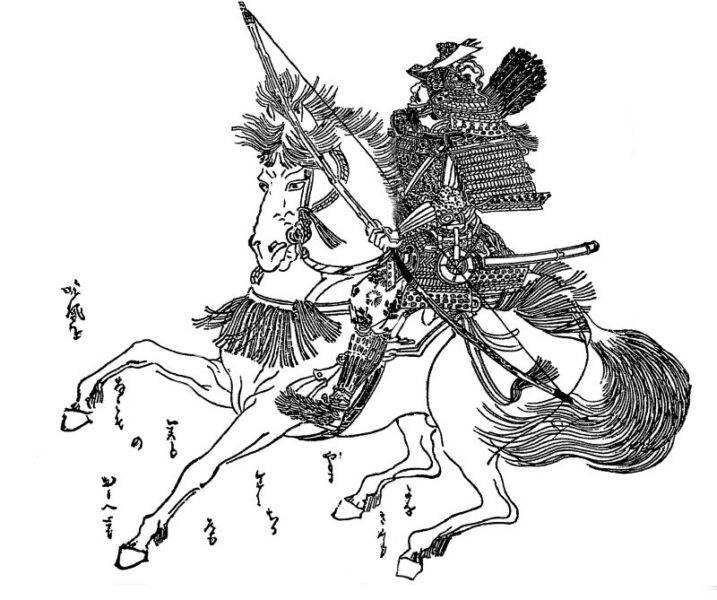
The Kokin Chomonshu, written in the Kamakura period, contains the following passage about the Battle of Kinugawa:
As the outcome of the battle is being decided, Yoshiie, the heir of the Genji clan, spots the defeated enemy general Sadato fleeing, and playfully addresses him in the second verse of the poem, saying, "The hem of your clothes is torn."
Sadato then turned around and "As the years pass, the pain of the threads getting tangled is overwhelming." Yoshiie was touched by Sadato's quick response and, as a "samurai's mercy," let Sadato escape.
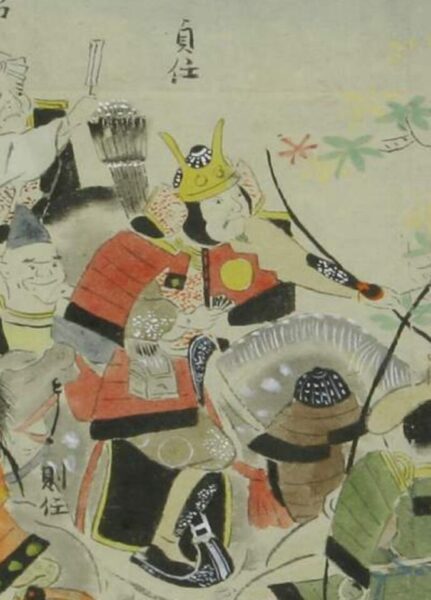
"Koromo no tate" is a pun on "clothes and armor" and "tate and tate" (shield). Yoshiie said, " The Koromogawa fortress was torn just like the warp threads of a garment (the shield of armor) were frayed," replied, "Over the years, the warp threads became distorted and frayed."
However, this elegant story is said to be a later fabrication
Remains of Kinugawa Fortress (Namiki-Yashiki) <Information>
- Historic site name: Remains of Kinugawa Fortress (Namiki-yashiki)
- Location: In front of Kinugawa Namiki, Oshu City, Iwate Prefecture
Google Map
The Battle of Kuriyagawa and the fall of the Abe clan
In defeat, Sadato first took refuge at Chokai Fort, but then retreated further north to Kuriyagawa Fort (located in Morioka City, Iwate Prefecture) at the northern end of the Oku-roku-gun region, where he challenged the Kokufu and Kiyohara armies to a final battle
The Kuchikawa Fort was built in conjunction with the Ubatano Fort, and is said to have been built over a wide area from Tatesaka and Tenshoji in the western part of present-day Morioka City to Zenkunen
It was a natural fortress that made use of large and small rivers such as the Kitakami River and high ground, and the Satodate ruins (Tenshoji-cho, Morioka City), which still remain today, are the remains of the Kuriyagawa Fortress, and the Abedate ruins (Abedate-cho, Morioka City) are thought to be part of the Oido Fortress
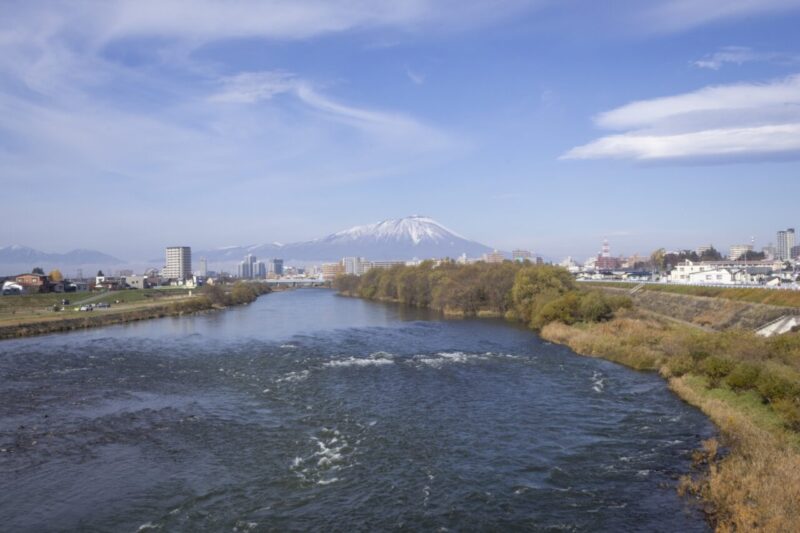
In this battle, Sadato was seriously wounded and captured, his younger brother Muneto surrendered, and Fujiwara no Tsunekiyo was also captured, resulting in the downfall of the Abe clan and the end of the Zenkunen War, which had lasted a total of 12 years
Kurigawa fence ruins<Information>
- Historic site name: Remains of Kuriyagawa Fortress
- Address: 1-4 Maekunen, Morioka City, Iwate Prefecture
Google Map
Remains of Otosaku <Information>
- Historic site name: Otosaku ruins
- Address: 13 Abedate-cho, Morioka City, Iwate Prefecture
Google Map
The end of Abe Sadato and Fujiwara Kiyotsune
Seriously wounded, Sadato is said to have died while being brought before Yoriyoshi
Furthermore, Kiyotsune betrayed Yoriyoshi during the Akurigawa Incident and further obstructed the reorganization of the Kokufu army, which led to Yoriyoshi's deep resentment, and it is said that he had Kiyotsune beheaded by sawing with a rusty sword, which caused prolonged pain
summary
After the Battle of Zenkunen, Minamoto no Yoriyoshi was praised for his efforts in defeating the Abe clan and was appointed governor of Iyo Province (Ehime Prefecture) in recognition of his achievements. This battle forged a deep relationship of master and vassal between the Minamoto clan and the warriors of the eastern provinces
In addition, the six Oku districts were given to the Kiyohara clan, who sided with Yoriyoshi, and the Kiyohara clan became a major force that spread throughout Mutsu and Dewa
However, this later led to conflict within the clan, eventually leading to the Gosannen War and the rise of the Oshu Fujiwara clan (continued in the Zenkunen War and Gosannen War ⑤)









![[Series ⑤: The role of the previous nine years and the role of the second three years] 20 years after the role of the previous nine years, signs of war once again spreading to Ou Minamoto Yoshiie 2](https://jp.neft.asia/wp-content/uploads/2023/11/43170603cd506225e1e986eec406b569-150x150.jpg)
![[Series 1: The role of the previous nine years and the role of the later three years] Why did the Ou War at the end of the Heian period take place? Shiba Castle Ancient Park](https://jp.neft.asia/wp-content/uploads/2023/11/6e4e9113cd864c9d5892db200df1ec1c-150x150.jpg)
![[Series ②: The role of the previous nine years and the role of the second three years] The role of the previous nine years is from the truce to the battle again, and the Kokufu army is struggling Taga Castle Ruins](https://jp.neft.asia/wp-content/uploads/2023/11/a0b8b1213124e7a13c7308fa81e053a2-150x150.jpg)
![[Series ③: The role of the previous nine years and the role of the second three years] Abe's army, which boasts unparalleled strength, is forced into a predicament by Minamoto no Yoriyoshi Minamoto Yoshiie](https://jp.neft.asia/wp-content/uploads/2023/11/134a54642694b5a7a2440647a33b73be-150x150.jpg)
![[Series ⑥: The role of the first nine years and the role of the second three years] From the internal conflict in the Kiyohara clan to the battle for the family succession, the role of the third year after it was considered a private war Three years later 1](https://jp.neft.asia/wp-content/uploads/2023/12/c0edc0a05afd06375d9f91bd4b7c9472-150x150.jpg)
![[Series ⑦: The first nine years of roles and the second three years of roles] The bond between the Genji and Togoku warriors, and the beginning of 100 years of prosperity of the Oshu Fujiwara clan Mokoshiji Garden Oizumi Pond in Winter](https://jp.neft.asia/wp-content/uploads/2023/12/75325853c50b8afdb1ab8cca28718b3a-150x150.jpg)
![Hiyama Ando clan, ruled Akita during the Sengoku period and based in Noshiro [Akita Prefecture] Akita Fan](https://jp.neft.asia/wp-content/uploads/2025/03/0275d341934f847be3452ea4662d9a4e-150x150.jpg)
![The battle for bone flesh unfolded in Yokote Basin: "Three Years of Second Year Battle" [Akita Prefecture] 0fb6939d60ada03f05f13ef893cd6663](https://jp.neft.asia/wp-content/uploads/2023/07/0fb6939d60ada03f05f13ef893cd6663-150x150.jpg)
